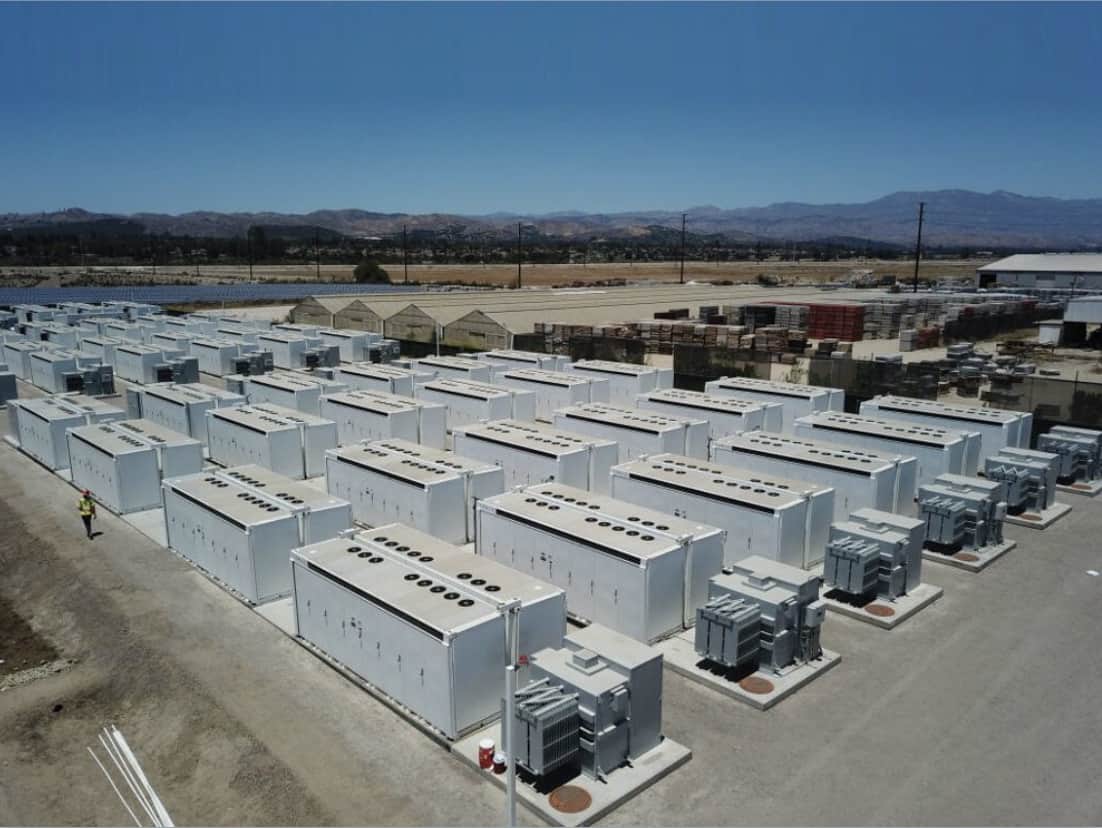As solar energy is more universally adopted throughout the nation one enormous issue still remains: energy storage. How do batteries know when to store energy and when to release it? Inherently, solar power is not available 24 hours a day, but humans consume energy around the clock, meaning smart solar storage solutions need to capture the energy when it is available and intelligently release it as needed. One leading solar industry entrepreneur, Jonathan W. Postal (J.W.) is leading the path forward with AI-backed software that tells any solar battery when to store energy and when to expend it.
From politics to finance to solar
J.W. enjoyed a winding career path from politics to investment management, ultimately landing in the solar and storage industry. He started his career managing political and environmental campaigns in Washington D.C. before transitioning into finance. After 13 years in the investment advisory business, J.W. was inspired to find a way to combine his love of environmental issues and finance. In 2008, he was co-founder of a company called Main Street Power, one of the first distributed solar finance businesses in the country. Backed by banking giants like Morgan Stanley, Main Street Power offered financing solutions for commercial and residential distributed solar projects, specializing in low-income, double-impact projects for the public sector.
Living in Denver, Colorado, J.W. met a team of people who believed in his ability to champion innovation in the renewable industry. It was here that he started WATTMORE in early 2017 (formerly Nikola Power), a renewable energy software company. “This was a passion for climate impact business from day one,” J.W. said. “I was not doing this just to be successful, but to have a positive impact on climate.”
WATTMORE intelligent storage software
J.W. launched the WATTMORE project five years ago but almost dissolved the business in 2020 due to slow progress and the difficulties of the covid pandemic.
“2020 was an ugly year for the business and the world. Some long, lonely days and nights thinking about the company’s future and mine, led to my decision to persevere and give the company one more effort. The company managed to scrape through the pandemic with financial assistance from PPP loans. Today, after a successful Series A, the company is thriving with more than 20 team members and programmers located around the world.
“We’ve leveraged our decades of experience to build revolutionary AI-powered software products for solar storage projects,” J.W. said. “We want to be the software that every battery project plugs into.”
“Batteries are just dumb boxes”
In order for our nation to get anywhere close to 100% renewable energy, we need to address the intermittent nature of solar and wind. “A battery is just a dumb box,” J.W. jested. “It doesn’t know when to store energy and when to discharge energy. The layer of software intelligence on top of that is the brain making all of the decisions.”
As we move toward a renewable energy powered grid, every distributed and renewable energy asset is going to need control, optimization, and decision-making power. “Solar and wind are incredible power generation sources,” J.W. said. “But the sun isn’t always shining and the wind isn’t always blowing. We need storage solutions to solve these problems for utilities, investors, and individuals.”
“But the sun isn’t always shining and the wind isn’t always blowing. We need storage solutions to solve these problems for utilities, investors, and individuals.”
Of course, solar storage batteries are already a hot commodity from major players such as Samsung, LG, and Tesla. “They are just selling boxes,” J.W. said. “It’s sophisticated, but really it’s just a box. The software is this whole other innovative thing that controls that box.”
 WATTMORE is creating AI-backed software that tells solar batteries like these when to store energy and when to expend it.
WATTMORE is creating AI-backed software that tells solar batteries like these when to store energy and when to expend it.
WATTMORE ratio & intellect
J.W. ‘s entrepreneurial endeavor has led to the creation of the WATTMORE Core, a set of algorithms that can scale for any size solar project. “A commercial industrial warehouse, a highrise microgrid, or a distributed solar solution for 10 homes,” J.W. said. “They are all very different projects, but they require essentially the same software solution.”
WATTMORE offers two distinct software products: Ratio and Intellect. Ratio is a ground-breaking analytic modeling tool that allows operators to plan, analyze, and forecast energy input and output.
The second software solution, Intellect, is an Energy Management Solution (EMS) that manages, optimizes, and saves energy. “Five years ago, an EMS system was pretty much just an on/off switch,” J.W. said. “Now we have EMS systems that are dynamic and adaptive to today’s market.” This is particularly pertinent in communities where people are paying extra for energy during peak strain hours. EMS software can manage energy in the battery until peak hours when it releases the energy to the consumers at a reduced cost compared to the energy being consumed through the power grid.
Innovation in the solar industry
After nearly losing his company in 2020, J.W. knows that innovation in the renewables industry doesn’t come easy. “Start your company with the right people at the right moment,” J.W. said. “Define what you’re building, why you’re building it, and for who.” J.W. started by surrounding himself with physical electrical engineers and technology specialists. “I’ve learned to pester and ask questions, read everything, constantly look at the industry, and ask challenging questions,” he said.
“Innovation comes when we think about where the puck is going, not where the puck is today,” J.W. said. “The puck is going somewhere more distributed, more flexible, and more inner-operable than it is today.”
The scope of the problem
The biggest hurdle for renewables is the global scale of the issue. “What we have done to our only livable planet is poisonous,” J.W. said. “We don’t just need to de-carbonize our energy sector, but also food production, transportation, construction, manufacturing, and on and on. It’s going to take commitment, investment, brains, and hardworking folks to make this happen.”
“We don’t just need to de-carbonize our energy sector, but also food production, transportation, construction, manufacturing, and on and on. It’s going to take commitment, investment, brains, and hardworking folks to make this happen.”
Fortunately, he believes the scales are finally tipping in favor of climate advocacy. “When I started in solar 15+ years ago you couldn’t get anyone’s attention,” J.W. said. “Now we have everyone’s attention. Our industry employs hundreds of thousands of Americans, which gives us a voice like oil and gas.”
“Climate change is a huge challenge and therefore also our biggest opportunity because every challenge can be solved by a new business,” J.W. said. “The best tech in the world has got to solve a problem.”
Policy impacting solar innovation
Of course, one of the other enormous hurdles for the renewables industry is the impact of state and federal policy. The Inflation Reduction Act, passed in 2022, represents a significant investment by the federal government in renewable energy and related technologies. “There are still significant headwinds, but the tipping point has happened,” J.W. said. “We have reached a point where almost everyone is talking about climate change.”
The Inflation Reduction Act offers financial incentives for those investing in clean energy, causing corporations and utility giants to refocus their initiatives. “There is so much capital flowing into climate tech,” J.W. said. “Renewable energy is getting real attention from investors and Wall Street.”
The future of distributed power
Nationally, as we look at increasing our investments in renewable energy, we are also looking at decentralizing power production to decrease strain on the grid and reduce the cost of electricity per megawatt. This notion, referred to as distributed power, means that more, smaller power production facilities will be located throughout the grid, closer to where the energy will be consumed. Solar installations on commercial building rooftops and other microgrid solutions are ideal for decentralizing power production.
“The closer you are to the end user of the power, the cleaner it can be,” J.W. said. “We’re disrupting a cumbersome lack of responsiveness from utility businesses who most likely have a monopoly on the customers in their service area.”
WATTMORE’s technology plays a key role in the build-out of more distributed renewable projects, offering operators the chance to optimize and maximize their projects, capturing unused energy and storing it for future use, rather than sending it right back into the grid.
Leveraging unused commercial real estate space
Like many in the solar space, WATTMORE is looking at how to leverage unused commercial real estate space for the development of more distributed solar + storage plants. “We have plenty of unused rooftops,” J.W. said. “It is only logical to use these spaces to produce clean, local power for residents and businesses.” With WATTMORE’s technology commercial businesses, communities, and residential homeowners can take control of their power production and capture clean energy 24/7 regardless of whether or not the sun is shining. Intelligent software is the key to massively scaling renewables across multiple verticals.
